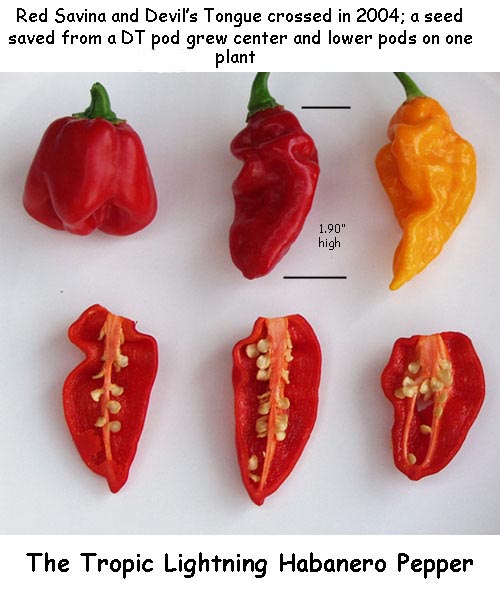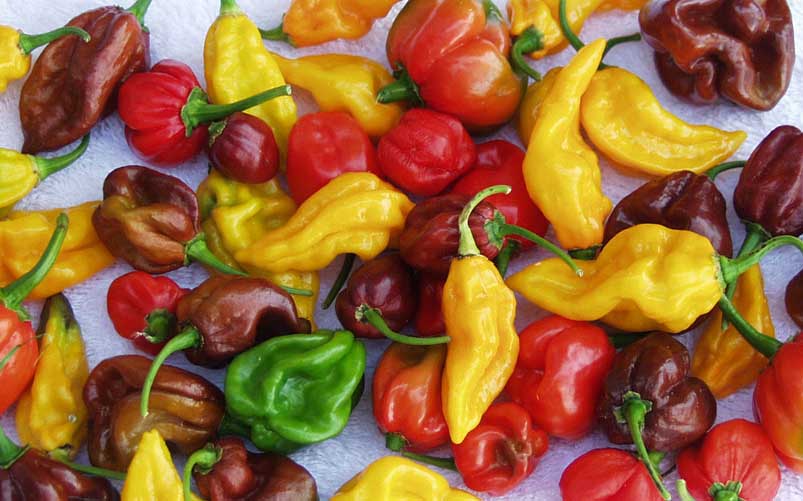

This page is about my new Habanero pepper variety which I've named "Tropic Lightning" [TL], in honor of the 25th Infantry Division. The year I spent in the 25th in Vietnam from 5 May 1967 thru 5 May 1968 wasn't the most fun year I've ever lived, but it sure as hell was memorable.


| Great pepper seed starting tips. | Good info on diseases, pests; read comments. | Good germination info. |
The photos below were taken on 13 October 2005. Most are of my #2 TL potted pepper, in a 16 inch ID pot, with Miracle-Gro planting mix, grown in partial shade. This is my largest, healthiest plant this year. The dead plant in the garden view near the bottom was TL #1. Somehow, I killed it by adding too much fertilizer or something else. Who the hell knows; so sue me. Damnfino. Shit!
Maybe these will breed true for a few generations, or not. I'm casting my seeds out to the world for you to take over from ancient me. Click on most photos below to see an enlarged version, except for the last two. Use browser Back button to return. First is two paper plates of TL's freshly cut in half to dry from Plant #2.
Next are two views of the north side of my house; looking roughly West and roughly SE.
See where this plant grows in the overhead view from Google Earth. That's my orange Nissan pickup with camper shell in the driveway, in both local and Google views. Note the silver plate in the back yard where the A arrow points in the enlarged view. Then see the potted TL plant with the inch ruler upright.
HUGE plant. Note the green pods in the second shot. Tomorrow, this plant gets moved into full sun, now that daytime temps are down to the low to mid 80's F. Relate to the two above.
Left shot below, note the pods marked with red dots; well camouflaged. Second shot shows some ripening pods.
The garden with weedblock and soaker hoses. North Texas black gumbo clay soil modified over 25 years with about a ton of peat plowed in, so it resembles no other soil in the world, but about pH 7- with lots of organic matter plowed in over the years.
The potted pepper moved into the sun 15 October. Even if you subtract the pot, it's still almost twice as high as the garden plants, and leaves are a darker green.
Finally, the results. Stages of the TL pepper, green to pink to red. Note the thick walls, which mean more heat.
Here's a mixed bag of the world's hottest varieties. Red Savina and Chocolate are obvious. Yellows are Devil's Tongue and Fatalii. They're now joined by the Tropic Lightning.

Th-th-th-that's all, folks! For now, at least.